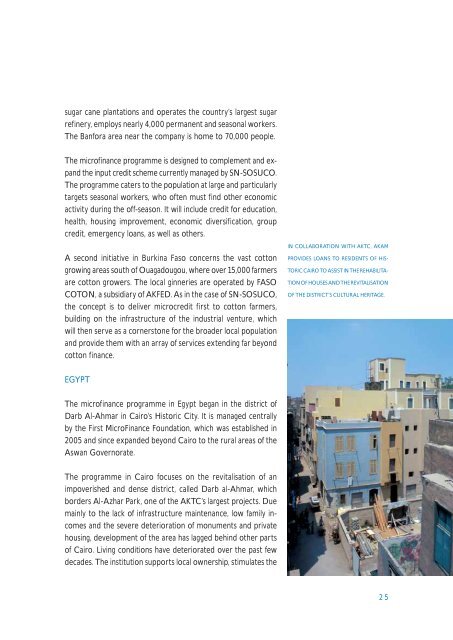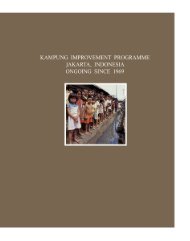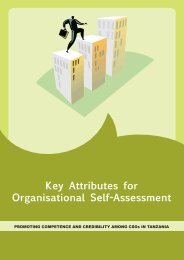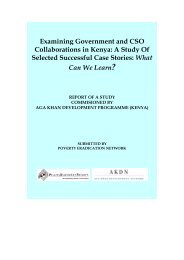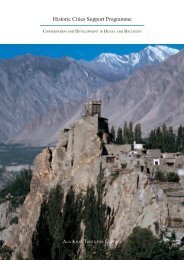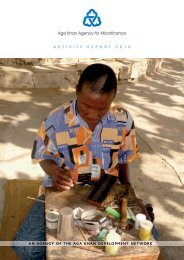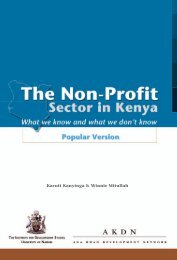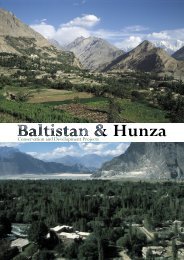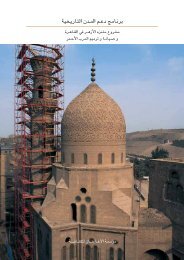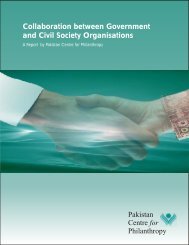The 2005 Aga Khan Agency for Microfinance Annual Report
The 2005 Aga Khan Agency for Microfinance Annual Report
The 2005 Aga Khan Agency for Microfinance Annual Report
Create successful ePaper yourself
Turn your PDF publications into a flip-book with our unique Google optimized e-Paper software.
sugar cane plantations and operates the country’s largest sugarrefinery, employs nearly 4,000 permanent and seasonal workers.<strong>The</strong> Ban<strong>for</strong>a area near the company is home to 70,000 people.<strong>The</strong> microfinance programme is designed to complement and expandthe input credit scheme currently managed by SN-SOSUCO.<strong>The</strong> programme caters to the population at large and particularlytargets seasonal workers, who often must find other economicactivity during the off-season. It will include credit <strong>for</strong> education,health, housing improvement, economic diversification, groupcredit, emergency loans, as well as others.A second initiative in Burkina Faso concerns the vast cottongrowing areas south of Ouagadougou, where over 15,000 farmersare cotton growers. <strong>The</strong> local ginneries are operated by FASOCOTON, a subsidiary of AKFED. As in the case of SN-SOSUCO,the concept is to deliver microcredit first to cotton farmers,building on the infrastructure of the industrial venture, whichwill then serve as a cornerstone <strong>for</strong> the broader local populationand provide them with an array of services extending far beyondcotton finance.IN COLLABORATION WITH AKTC, AKAMPROVIDES LOANS TO RESIDENTS OF HIS-TORIC CAIRO TO ASSIST IN THE REHABILITA-TION OF HOUSES AND THE REVITALISATIONOF THE DISTRICT’S CULTURAL HERITAGE.EGYPT<strong>The</strong> microfinance programme in Egypt began in the district ofDarb Al-Ahmar in Cairo’s Historic City. It is managed centrallyby the First MicroFinance Foundation, which was established in<strong>2005</strong> and since expanded beyond Cairo to the rural areas of theAswan Governorate.<strong>The</strong> programme in Cairo focuses on the revitalisation of animpoverished and dense district, called Darb al-Ahmar, whichborders Al-Azhar Park, one of the AKTC’s largest projects. Duemainly to the lack of infrastructure maintenance, low family incomesand the severe deterioration of monuments and privatehousing, development of the area has lagged behind other partsof Cairo. Living conditions have deteriorated over the past fewdecades. <strong>The</strong> institution supports local ownership, stimulates the25


